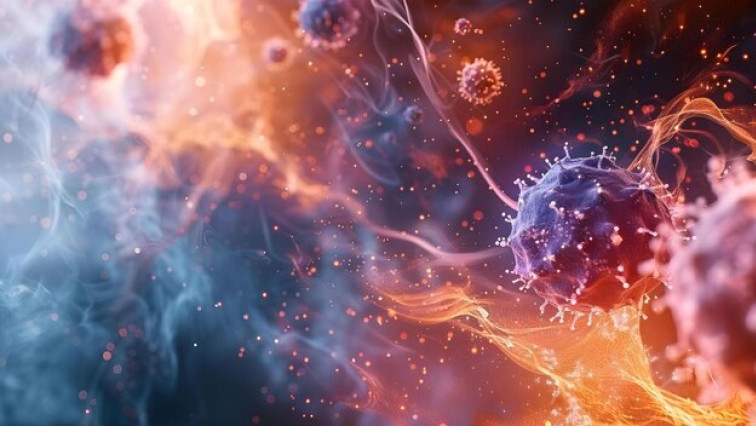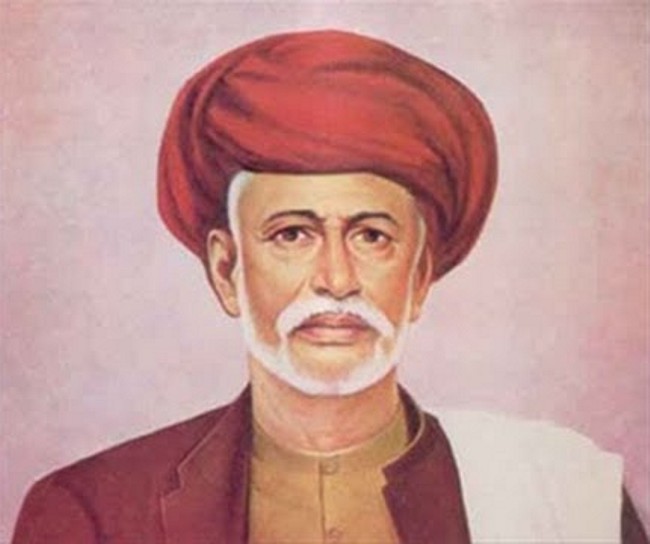
The world faces cancer as its deadliest condition while India carries one of the largest cancer disease loads globally. The benefits of traditional cancer treatments through chemotherapy and radiation remain effective even though they produce significant adverse side effects. Modern healthcare approaches now use magnetic hyperthermia therapy which allows precise and safer damage of cancer cells.
Context:
-
Scientists in India developed a magnetic nanoparticle system which demonstrates potential for cancer therapy via magnetic hyperthermia that uses external magnetic fields to heat tumor cells specifically until they are destroyed.
-
The new minimal procedure offers a potential solution to minimize the adverse effects chemotherapy along with radiation treatments produce.
Key Scientific Development:
-
Magnetic Hyperthermia selects tumor cells through magnetic nanoparticles to heat them to the necrotic temperature of 46°C without harming adjacent healthy tissue.
-
Indian research teams at IASST and NIT Nagaland have synthesized nanocrystalline cobalt chromite magnetic nanoparticles which contain rare-earth Gd as a doping material.
-
Synthesis Method: Conventional chemical co-precipitation technique.
-
These nanoparticles demonstrated strong potential for cancer treatment using hyperthermia procedures because they produced effective heat when an alternating magnetic field was applied in fluid state.
-
The discovery has potential applications to provide externally regulated cancer treatment therapies that minimize systemic adverse side effects.
Data Related to Cancer in India
-
The total new cancer cases detected in India for 2022 reached 1,413,316 although women suffered more cancers (722,138) than male patients (691,178).
-
The incidence of breast cancer among Indian patients was 192,020 cases, defining 13.6% of cancer cases and affecting more than 26% of female patients.
-
Oral cavity cancer along with cervical and lung cancer and esophageal cancer are among the most commonly occurring malignancies in India.
-
India faced 32.9% of global Oral cavity cancer deaths together with 28.1% of new cases during 2019 because of its high smokeless tobacco usage.
-
The low survival rate of 51.7% for cervical cancer in India means that it contributes to 23% of global cervical cancer deaths below the US at 70%.
Key facts related to Cancer
-
Observed on: 4th February annually.
-
Organized by: Union for International Cancer Control (UICC) serves as the organizer of this initiative.
-
Origin: Historical records show that the World Summit Against Cancer hosted in Paris marked the inaugural celebration of this event in the year 2000.
-
Paris Charter: The Paris Charter aims to prompt research activities while enhancing cancer prevention methods together with better service programs and increasing worldwide cancer consciousness.
-
Theme of 2025: United by Unique
Cancer Overview:
-
Tumors spread through organs while occurring from uncontrolled cell proliferation in diseases which form malignant growths.
-
Mutations within DNA cause abnormal cell control which produces cancerous conditions.
Cervical Cancer Focus:
-
Type 16 and 18 HPV infections along with other strains represent 99% of the factors that lead to cervical cancer within the cervix.
-
Accounts for the fourth most common cancer in women globally.
-
The majority of cervical cancer diagnoses together with cervical cancer-related fatalities happen predominantly in regions with lower and middle incomes.
Government Initiatives Related to Cancer in India:
-
In the interim budget for 2024-25 the government supported a recommendation for girls between 9 to 14 years old to receive HPV vaccination.
-
National Programme for Prevention and Control of Cancer, Diabetes, Cardiovascular Diseases and Stroke.
-
National Cancer Grid: Enhances cancer care standards.
-
The holiday of National Cancer Awareness Day carries the mission to educate people about cancer prevention measures and early diagnosis methods.
-
The HPV Vaccine has been promoted to protect people from cervical cancer through its distribution.
Conclusion
India has taken a substantial step toward global medical progress through its development of nanocrystalline magnetic nanoparticles meant for cancer therapies. Magnetic hyperthermia joins forces with HPV vaccination and national awareness programs to provide several strategic cancer prevention tools that fight increasing cancer prevalence among Indian women. The improvement of survival rates alongside the closure of equality gaps depends on continuous study along with fair healthcare accessibility.



 Telangana Becomes First State to Enforce SC Sub-Categorisation with 2025 Act
Telangana Becomes First State to Enforce SC Sub-Categorisation with 2025 Act Operation Chakra V: Tackling Digital Arrest Cyber Frauds in India
Operation Chakra V: Tackling Digital Arrest Cyber Frauds in India Dr. B.R. Ambedkar’s 135th Jayanti: Legacy of India's Constitution Maker
Dr. B.R. Ambedkar’s 135th Jayanti: Legacy of India's Constitution Maker Naxalmukt Bharat Abhiyan: From Red Zones to Growth Corridors
Naxalmukt Bharat Abhiyan: From Red Zones to Growth Corridors First Panchayat Advancement Index (PAI) Report Released – Gujarat & Telangana Lead
First Panchayat Advancement Index (PAI) Report Released – Gujarat & Telangana Lead Niveshak Didi Initiative Phase 2 Launched to Promote Financial Literacy Among Rural Women
Niveshak Didi Initiative Phase 2 Launched to Promote Financial Literacy Among Rural Women Jyotiba Phule: The Radical Reformer India Still Needs to Learn From
Jyotiba Phule: The Radical Reformer India Still Needs to Learn From World Homoeopathy Day 2025: Celebrating Dr. Samuel Hahnemann's Legacy
World Homoeopathy Day 2025: Celebrating Dr. Samuel Hahnemann's Legacy Tahawwur Rana Extradited to India: What Comes Next in the 26/11 Case?
Tahawwur Rana Extradited to India: What Comes Next in the 26/11 Case? PM Modi Inaugurates Navkar Mahamantra Divas to Promote Jain Ethics Globally
PM Modi Inaugurates Navkar Mahamantra Divas to Promote Jain Ethics Globally






